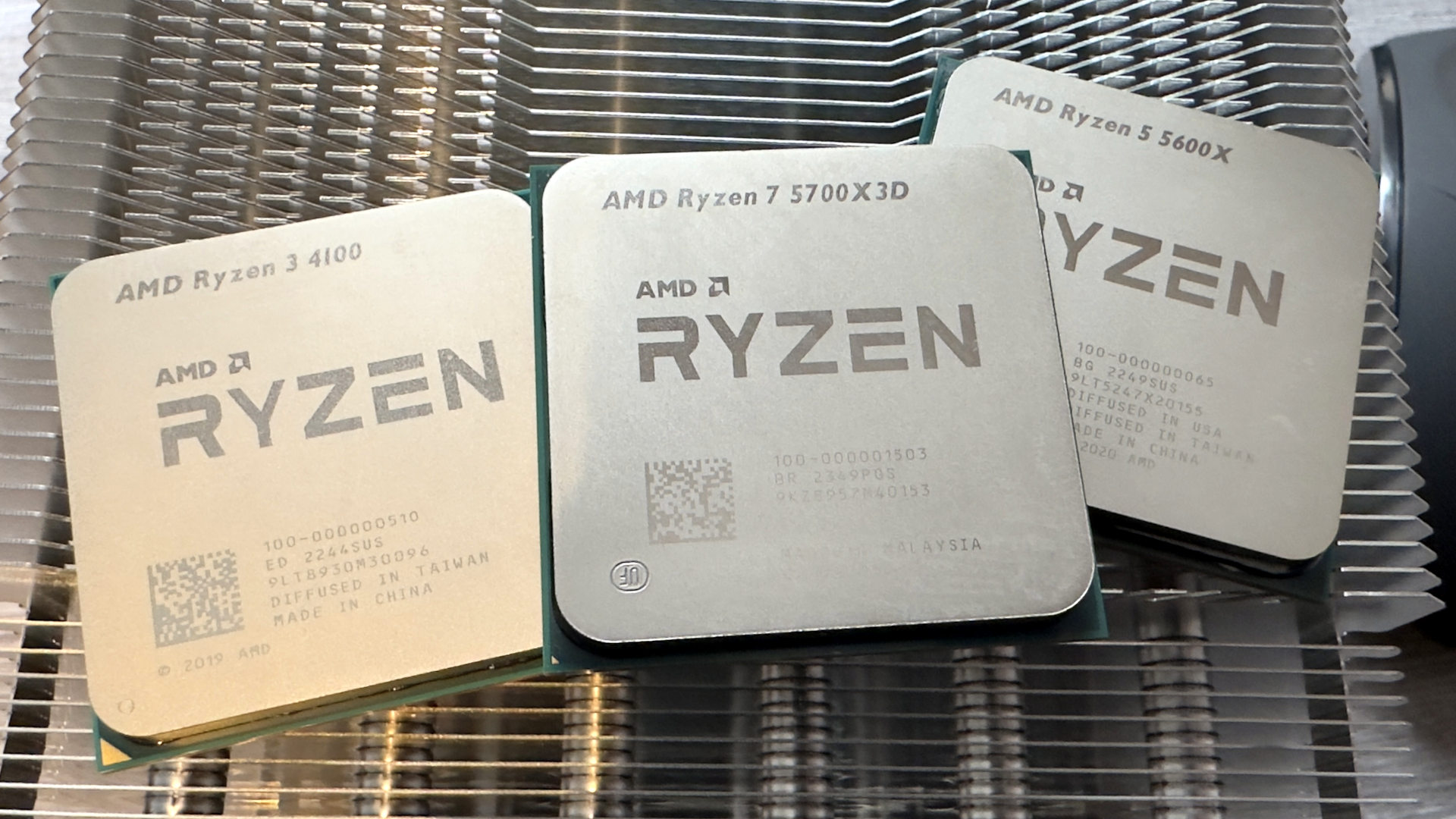
Does that make it old-new or new-old?
Check out more of the year’s best tech in our PC Gamer Hardware Awards 2024 coverage.
I think it’s fair to say that we’ve been spoilt for choice when it comes to PC hardware in 2024. Processors, graphics cards, RAM, motherboards, cases, laptops, monitors, handhelds—the list is huge and picking just one for my personal pick from that lot has been quite hard. But then I remembered something that I’ve been using a lot this year and how impressed I’ve been with its stellar gaming performance.
So here it is, then. My personal pick of 2024 is the AMD Ryzen 7 5700X3D. Launched in January for $249, it’s the very epitome of old-new… or should that be new-old? It’s an AM4-socket CPU, which I’m pretty sure has been around since the dinosaurs and regularly confuses palaeontologists when they’re rooting around for fossils.
It uses the Zen 3 architecture, which first launched in November 2020, so that’s pretty old too. And then there’s the fact that the Ryzen 7 5700X3D is really just a Ryzen 7 5800X3D with lower clocks, and that chip first appeared in April 2022.
So why would I pick something that’s clearly old tech as being the best tech of this year? It’s all about AMD’s gaming wizardry in the form of 3D V-Cache.
System memory is just too slow for modern processors; even the fastest DDR5 money can buy doesn’t cut the mustard. So, to make sure CPUs are never left waiting for data and instructions, they all have multiple tiers of high-speed cache built into them.
The so-called last level cache (usually classed as Level 3 or L3) is the largest but slowest of the tiers but it’s still crucial to how fast a processor can run programs such as games. A standard desktop Ryzen 7 chip usually has 32 MB of L3 cache, shared across its eight cores.
What makes the X3D variants special is that AMD developed a way to add more L3 cache but without making the die bigger. In short, the engineers went vertical, adding a slice of cache to the chiplet housing the cores. In the case of the Ryzen 7 5700X3D, the total L3 cache is a frankly ridiculous 96 MB, even by today’s standards.
AMD’s last level cache works as a victim cache. Instead of holding any data from anywhere, it just stores stuff that’s been pushed out of the L2 cache to make room for new data. With 96 MB on tap, it saves a huge amount of valuable time being otherwise lost waiting for information to be read from the computer’s RAM.
Games churn through all kinds of different data so the 3D V-Cache can make a big difference to how well they run, especially once they’re CPU- or system-limited. You can see this clearly in the gaming benchmarks from when I reviewed the Ryzen 7 5700X3D:
But it’s not just about average frame rates or even the 1% low figures. 3D V-Cache can help reduce micro-stutters, those fleeting brief moments when the frame rate crashes right down, but not frequently enough to register in the 1% low data.
As fantastic as the extra cache is, it’s not real magic, of course, and it can’t solve problems caused by a game’s engine or hardware-related issues. But for anyone with an AM4 gaming PC looking for an affordable drop-in upgrade that will keep the rig going for many more years to come, then the Ryzen 7 5700X3D can’t be beat.
Let’s say you currently have a Ryzen 5 5600X. You could pick up a 5700X3D for $220 at Amazon and, if have a decent enough graphics card, enjoy the same kind of performance uplift that you can see in the above charts.
It does use quite a bit more power than a 5600X but you don’t need to spend a fortune on cooling to keep the 5700X3D’s thermals in check. Thermalright’s PA120SE might not look anything special but it’s a brilliant cooler and costs $35 at Amazon.
That’s $255 all-in for an outstanding upgrade. We’d all love to have an ultra-powerful gaming PC, sporting a Ryzen 7 9800X3D and an RTX 4090, but that’s many thousands of dollars, just for those two components.
In a tech world that often doesn’t make an awful lot of sense at times, the Ryzen 7 5700X3D ticks all the right boxes for me. It’s old tech but that’s irrelevant when you look at just how good it is. We may never see the likes of it again, or at least not for a good few years. Well done AMD, you didn’t get everything right this year, but you absolutely did with the 57003XD.
If you want to find out who won the PC Gamer Hardware Awards, we’ll be publishing the winners on New Year’s Day.










